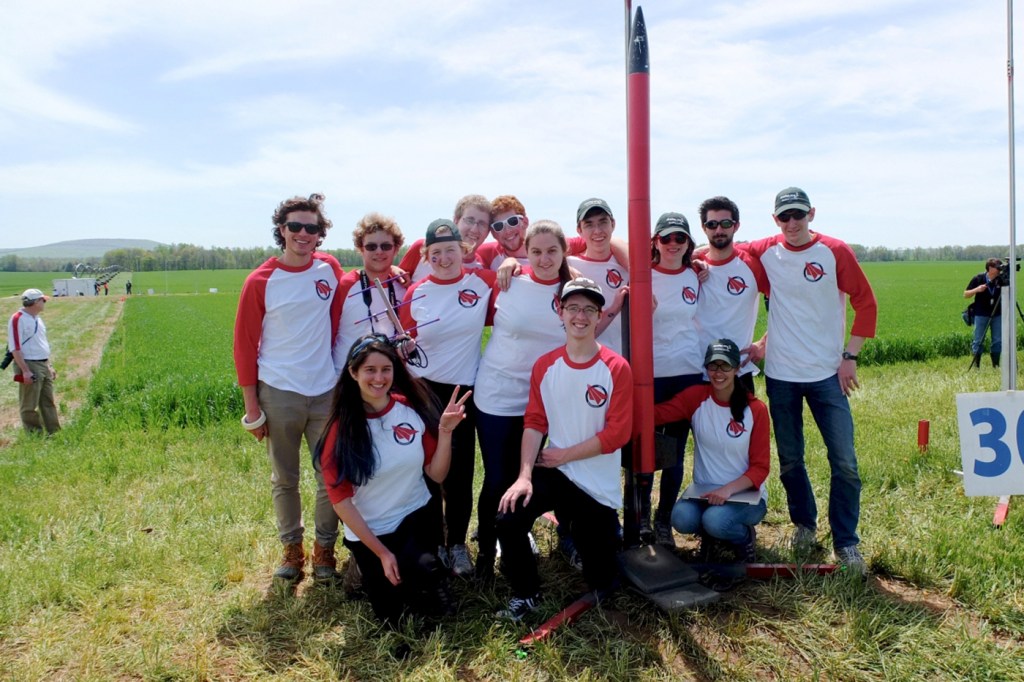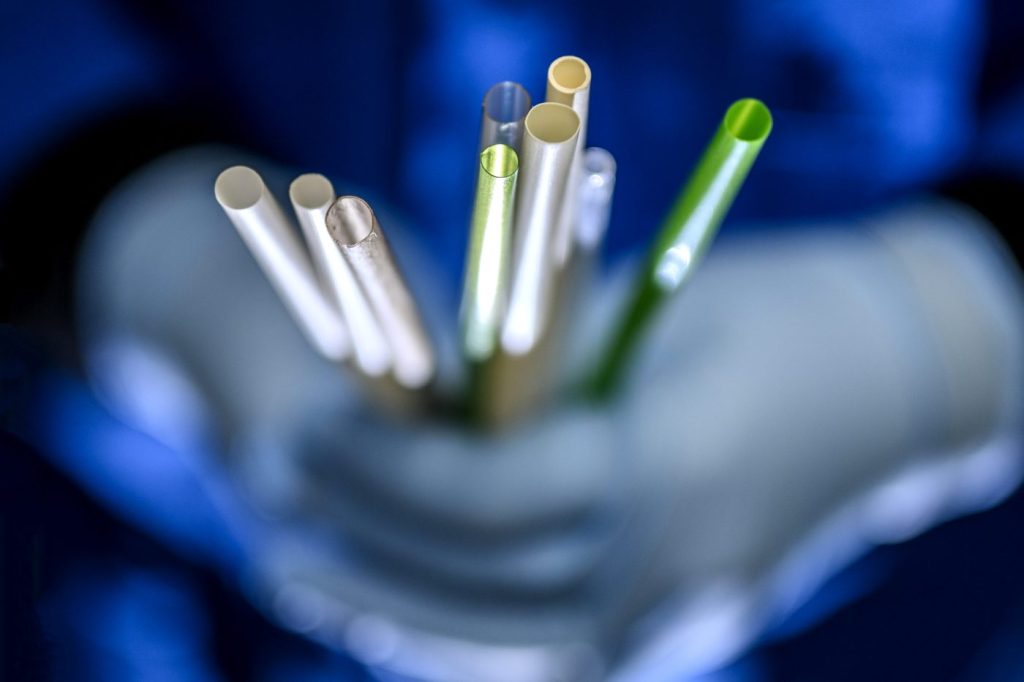NASA competition boosts students’ passion for rockets

The Northeastern University chapter of the American Institute of Aeronautics and Astronautics recently undertook its toughest mission to date, and through it learned the power of teamwork.
In April, the student group competed in NASA’s Student Launch Initiative, an annual research-based, competitive, and experiential exploration project that provides relevant and cost-effective research and development to support the Space Launch System.
“It was overall a fantastic experience,” said the club’s past president Andrew Buggee, S’16. “Everyone just came back with this amazing confidence.”
This year each of the 23 participating schools was tasked with designing and building a rocket with a robotic component that would grab a payload and load it into the rocket. The rocket then had to prepare itself for lift off, launch into the air, and then jettison the payload at a specific altitude. The students were told their work could possibly inspire how NASA approaches future Mars missions.
“It was really inspiring to be able to see that we are doing this work and it could lead to something that might end up in space,” said club member Alanna Ferri, E’16.
The 13 students drove two straight days down to the Marshall Space Flight Center in Huntsville, Alabama, where they presented their rocket to NASA engineers and received a tour of the flight center.
Unfortunately, due to mechanical problems that arose the day of the competition, the Northeastern group’s rocket was not fully functional. However, the group still received high praise from the judges for the autonomous ground support station, which consisted of the robotic arm, the vision system to look for the payload, and the rocket.

The student’s work on their system. Contributed photo
They also praised the fact the station was the only one among all the entrants that remained compact and unfurled–unveiling the rocket and preparing it for liftoff–only when it was ready to land much like an actual NASA apparatus.
“NASA wanted us to keep the Mars environment in our heads when we were designing and we took those instructions very seriously,” Buggee said. “They said ours was more fit for an actual mission.”
In addition to building the rocket, the initiative required students to keep detailed records of their work and provide regular updates to NASA via video conference. They also appointed club board member Joe Flaherty, E’18, to focus on developing programs in science, technology, engineering, and math—known as the STEM fields—to engage more than 200 young students, another criteria of the initiative.
Having to incorporate a facet of specialties including electronics, robotics, and rocketry into one contraption was no small task, and Buggee said most of the club members did not take a weekend off during the spring semester.
“Seeing the dedication people put into it was inspiring,” Buggee said. “The word ‘NASA’ holds a lot of gravity. To see freshmen spending every Friday and Saturday night soldering circuit boards makes you want to keep going.”





